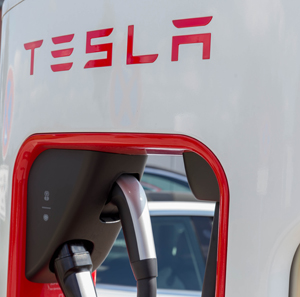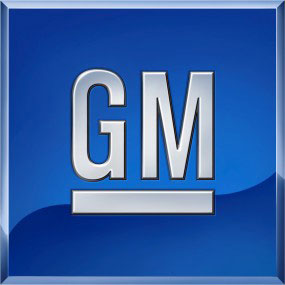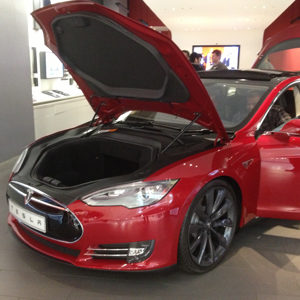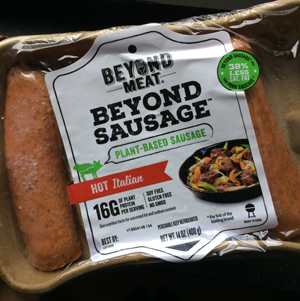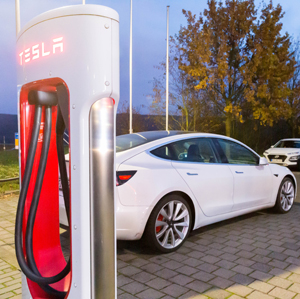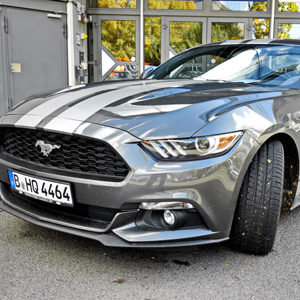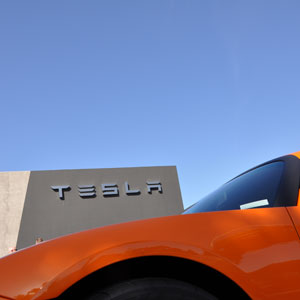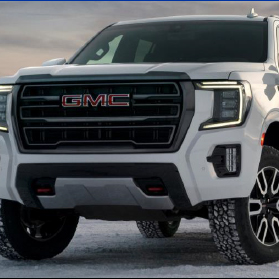
Jefferson Avenue in Detriot. Flickr Image.
- General Questions
- Vehicle Sales Related Questions
- Balance Sheet Related Questions
- Revenue and Profit Related Questions
- Stockholders Equity and Dividend Related Questions
- Business Acquisition and Disposal Related Questions
General Questions
1. What are the business segments of General Motors (GM)?
GM reported its financial results based on the following business units:
- GM North America (GMNA)
- GM International (GMI)
- GM Cruise
- GM Financial
- GM Corporate
For detailed description of each business segment, please visit this page: General Motors Business Segments
2. What are the car brands marketed under General Motors (GM)?
GM North America markets its vehicles under these brands: Buick, Cadillac, Chevrolet and GMC.
GM International markets its vehicles under these brands: Buick, Cadillac, Chevrolet, GMC and Holden.
The automotive joint ventures between GM and China companies market their vehicles under these brands: Baojun, Buick, Cadillac, Chevrolet, Jiefang and Wuling.
3. Did GM make any money from the automotive joint venture with China?
Yes, GM did make money from the automotive joint venture with China in the form of equity income. The equity income showed up in the financial statement, specifically in the income statement.
GM made about $1.981 billion, $1.976 billion and $1.973 billion respectively in the year ended Dec 31, 2018, 2017 and 2016 in the form of equity income from the automotive joint venture with China.
4. What are the companies in China that GM has joint venture with?
There are quite a few companies in China that GM has joint venture with. A few of them are listed as follow:
- Shanghai Automotive Industry Corporation (SAIC) General Motors Corp., Ltd.
- FAW-GM Light Duty Commercial Vehicle Co., Ltd. (FAW-GM)
- Pan Asia Technical Automotive Center Co., Ltd.
- SAIC General Motors Sales Co., Ltd.
- SAIC GM Wuling Automobile Co., Ltd. (SGMW)
5. Why does GM (and maybe other automakers) prefer to promote and sell SUV and full-size pick-up trucks?
The company encourages consumers to buy SUV and full-size pick-up trucks because of the higher profit margins on SUV and trucks. GM has stated in its financial statement that the success of the company is dependent on its ability to sell higher margin vehicles in sufficient volumes. Any shift in consumers preferences towards smaller and more fuel-efficient vehicles could spell trouble for the company.
6. What has GM done so far in its restructuring plan?
Announced in early 2017, GM has undertaken several restructuring actions to lower its operating costs in response to difficult market and operating environment in various parts of the world. These are the major restructuring actions that the company has taken so far:
North America – manufacturing facilities closure, employees separation programs and accelerated depreciation. In North America alone, GM has incurred a restructuring charge of $790 million in the 3 months ended March 31, 2019 and expects to incur an additional restructuring charge of $1.2 billion in average for the rest of 2019.
South Korea – closure of a facility, employees separation programs and statutory pension payment. The restructuring plan in South Korea has resulted in a charge of $1.1 billion in the year ended Dec 31 2018.
Europe – GM has exited the European market in 2017. On July 2017, GM closed the sale of Opel/Vauxhall Business to PSA Group. On Oct 2017, GM has closed the sale of Fincos to Banque PSA Finance S.A. and BNP Paribas Personal Finance S.A. In short, GM has sold all its business units in Europe.
7. How much is the GM investment in Lyft worth now?
According to the company financial statement dated March 31, 2019, the fair value of the investment in Lyft was worth a whopping $1.2 billion as of March 31, 2019. It was worth $884 million as of Dec 31, 2018.The investment in Lyft is accounted for as a long-term asset in its balance sheet under the “Other Assets” section.
8. Is there a restriction on when GM can sell its Lyft shares?
Yes, GM is restricted from selling the Lyft shares until Sept 26, 2019.
9. How much is the GM investment in the automotive China joint ventures worth now?
In the financial statement dated Dec 31 2018, GM reported a carrying amount of $7.8 billion for the investment in automotive China joint ventures. This amount is a cumulative sum of all the investment in automotive China joint ventures.
In the financial statement dated March 31 2019, GM did not break down the investment by segments but reported a lump sum investment that is worth $8.3 billion for all the joint ventures.
Vehicles Sales Related Questions
1. How many vehicles has GM sold in 2019?
GM wholesale vehicles sales data shows that the company has sold 1.1 million vehicles worldwide in the 3 months ended March 31 2019. The wholesale vehicle sales data correlates closely with GM automotive revenue and does not include vehicles sold under joint ventures.
To see the number of quarterly vehicle deliveries, please visit this page: General Motors Wholesale Vehicle Sales Numbers.
2. How many vehicles outside of US has GM sold in 2019?
The wholesale vehicles sales data shows that GM has sold about 372 vehicles which is 34% of its total wholesale vehicle sales outside of US in the 3 months ended March 31, 2019.
3. How many vehicles has GM sold in China in 2019 and 2018?
In the quarterly filing dated March 31 2019, GM has sold 814,000 vehicles in China as of the 3 months ended March 31 2019. In 2018, GM has sold 3.6 million vehicles in China for the 12 months ended Dec 31 2018.
Take note that the above vehicle sales figures in China is the total vehicle sales data and it does not correlate with the revenue recognition for the company. As a result, the quarterly and annual statements do not recognize these vehicle sales as revenue in the income statements because the automotive China is a joint venture with General Motors.
4. Is vehicle sales in China increasing or decreasing for GM?
Based on the sales data from the 2018 annual filing, vehicle sales in China has declined. In the 12 months ended Dec 31, 2018, 2017 and 2016, total vehicle sales were 3.6 million, 4.0 million and 3.9 million respectively.
5. What is GM market share in terms of vehicle sales?
In the company quarterly filing, GM provided its market share data based on the total vehicle sales numbers. As of the latest quarter March 31 2019, GM market share in the Unites States was 16%. GM market share in China was 13%. In the Asia Pacific, Middle East and Africa region, the combined market share was 8%. For South America alone, GM market share was 16%.
If you would like to know more about General Motors market share and the company competitive advantages, please head out to this page: General Motors Market Share.
6. Has GM market share in vehicle sales increased or decreased?
In terms of year over year vehicle sales, GM market share has declined from 1Q 2018 to 1Q 2019. For example, the GM North America market share data shows that the percentage has declined slightly from 16.3% to 15.6% from 1Q18 to 1Q19. In the same period, China market share has declined the most, from 15.1% to 13.3%. GM has managed to maintain its market share in South America at 15.5%.
Balance Sheet Related Questions
1. How much cash does GM have?
Based on the 1Q19 quarterly report, GM has about $20.8 billion of cash and cash equivalents. This amount is inclusive of the restricted cash which totals about $3.6 billion.
2. How much debt does General Motors have?
As of March 31, 2019, the balance sheet of 1Q19 shows that GM has a total debt of $107 billion. Out of this $107 billion of debt, $15 billion came from automotive debt. The rest of the debt, with an amount of $92 billion, came from GM Financial.
3. Why is GM having so much debt?
Most of the debt comes from GM Financial, a subsidiary of GM which provides financing services to retail customers and dealership owners. The March 31 2019 quarterly statement shows that $92 billion of debt came from GM Financial. Out of the $92 billion, $41 billion was secured debt and $50 billion was unsecured debt.
Secured debt consists of revolving credit facilities and securitization notes payable. A majority of the secured debt was asset-backed securities (ABS) in which these debt was issued by VIEs (variable interest entities) and is backed by the company financial receivable and leasing related assets. There are several reasons for GM to issue debt in this way. A few of the advantages are funding costs reduction, risk transfer, lower capital requirement, etc. To read about the detailed of securitization of asset, please visit the WikiPage here: Securitization.
Unsecured debt consists of senior notes, credit facilities and other unsecured debt. These debt were issued to fund the operation of the company and to repay existing debt that is maturing.
Revenue and Profit Related Questions
1. How does the automotive China joint venture contribute to General Motors revenue or net income?
The automotive China joint venture contributes to GM in terms of equity income in the income statement. The equity income is an after-tax profit or net income that comes from all of the companies in the joint venture with China. The after-tax profit is then added to the pre-tax profit in the GM income statement. As a result, the profits from joint venture is doubled taxed.
2. How much has the automotive China joint venture contributed to GM bottom line?
In the years ended Dec 31, 2018, 2017 and 2016, the automotive China joint venture has contributed $1.981 billion, $1.976 billion and $1.973 billion respectively in terms of equity income in GM income statement. The equity income is added at the pre-tax profit section of the company income statement and will need to be taxed before arriving at the net income.
Stockholders’ Equity and Dividends Related Questions
1. What is the outstanding balance for GM common stock?
As of Dec 31, 2018, GM had 1.4 billion shares of common stock issued and outstanding.
2. How much did GM pay in dividends on common stock in 2018?
GM paid $2.1 billion, $2.2 billion and $2.3 billion in dividends on common stock for the years ended December 31, 2018, 2017 and 2016.
3. How much did GM spend in common stock repurchase program in 2018?
In the years ended December 31, 2018, 2017 and 2016, GM spent $100 million, $4.5 billion and $2.5 billion in common stock repurchase program.
4. What is the total number of common stock did GM buy back in 2018?
In the years ended December 31, 2018, 2017 and 2016, GM bought back 3 million, 120 million and 77 million of outstanding common stock.
5. Has GM issued any preferred stocks or shares?
Yes, GM has issued preferred stocks or shares under its subsidiaries.
Specifically, GM Financial has issued a cumulative value of $1.5 billion of preferred stocks since 2017.
GM Cruise has also issued $900 million of preferred stocks to Softbank, representing 10.9% of GM Cruise Holdings’ equity. Upon the successful commercial deployment of autonomous vehicles in GM Cruise, Softbank is obligated to purchase another $1.35 billion of GM Cruise preferred stocks. The total ownership of the preferred stocks will represent 18.6% of GM Cruise Holdings’ equity.
In 2018, GM Korea has issued $720 million of preferred stocks to KDB.
6. Does GM need to pay any dividends on the issued preferred stocks?
Yes, GM is obligated to pay a certain amount of dividend on preferred stocks.
Specifically, for GM Financial Preferred Stock, the dividends for the first $1.0 billion preferred stock issued in 2017 are to be paid semi-annually at a fixed rate of 5.75%.
The $500 million GM Financial Preferred Stock, issued in 2018, obligates GM to pay dividends semi-annually, at a fixed rate of 6.5%.
The dividends for GM Cruise Preferred Shares are cumulative and accrue at an annual rate of 7%, payable quarterly. Besides, the GM Cruise Preferred Shares are convertible into GM Cruise common stock.
The dividends for GM Korea Preferred Shares are cumulative and accrue at an annual rate of 1%.
7. How much dividends on preferred stocks has GM paid or incurred in 2018?
In the year ended December 31, 2018 and 2017, the annual reports show that GM has incurred $98 million and $16 million in dividends payments on preferred stocks respectively. GM has not incurred any dividends payment on preferred stocks in 2016.
Business Acquisition and Disposal Related Questions
1. What happen to GM Europe (GME) business segment?
GM has sold its GME business unit to PSA Group in 2017.
2. Why did GM sell its GM Europe (GME) business to PSA Group?
The reason could be that the GME business unit has been suffering losses for years. For example, in the years ended December 31, 2016, 2015 and 2014, GME adjusted earnings before interests and taxes (EBIT-adjusted) were -$257 million, -$813 million and -$1,369 million respectively according to the company 2016 annual report.
3. How did the sale of GM Europe (GME) business affect the income statement of GM?
The sale of GME business has impacted the 2017 income statement. GM suffered a massive loss in its income statement (profit and loss statement) due to a charge of $4.2 billion in the year ended December 31, 2017. According to the company 2017 annual report, the reported net loss attributable to common stockholders was $3.9 billion for the year 2017. In addition, the basic earnings per common share was -$2.65 for the year ended Dec 31, 2017.
4. How much money did GM receive for the sale of GM European business?
According to the 2018 and 2017 annual report, GM received a net cash of $2.5 billion for the European business with $2.2 billion in cash, $808 million in warrants in PSA Group and GM paid out $455 million in cash as de-risking premium to PSA Group for assuming certain underfunded pension liabilities.
References:
1. All financial figures in this page were obtained from General Motors SEC Filings: General Motors SEC Filings.
2. Featured image was obtained from crudmucosa and blog post image was obtained from paul bica.

